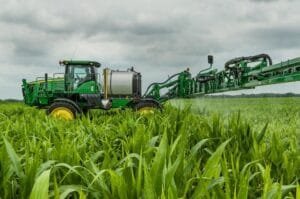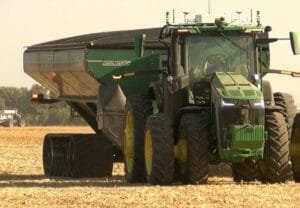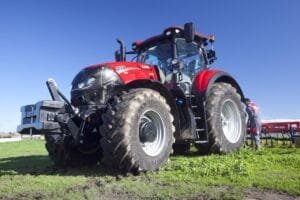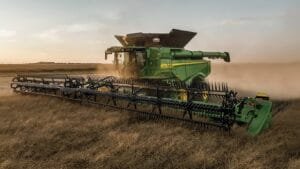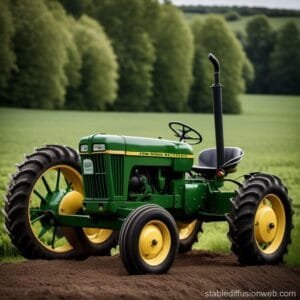Brooks Tractor, a family-operated institution rooted deeply in Wisconsin’s construction equipment sector, recently orchestrated its Technology Open House at their Sun Prairie headquarters-a spring event that rolled out a dynamic display of leading innovations while creating subtle reminiscence about the company’s 80-year history. Spectators murmured among themselves at the array of new machinery-not just glancing but partaking directly with controls many had only seen from afar. It’s rare for such hands-on familiarity to be afforded outside routine job sites.
Even before sunrise spread over Dane County’s rolling streets on May 14th, anticipation shadowed the Brooks Tractor facility. Attendees were not only local contractors; independent operators and curious technophiles arrived-fueling dialogue as unpredictable as April frost in Wisconsin. At some open houses, there is mere passive observation; this one thrived on participation. Demonstrations pulsed with life as trainers from both Brooks Tractor and its affiliate Brooks Positioning Systems guided individuals through SmartGrade (ranging cleverly from basic two-dimensional setups to intricate three-dimensional machine guidance solutions), SmartDetect, and Topcon MC-Mobile technologies.
Particularly notable was the John Deere 333G compact track loader fitted out with SmartGrade precision-the sort of integration blurring lines between operator finesse and algorithmic intervention. Across another axis sat the newly unveiled John Deere 335P loader: adjectives like “nimble” or “robust” don’t quite capture what guests seemed to express after maneuvering it across improvised gradients outside. In close proximity, a 210P excavator boasted Topcon grade control prowess alongside a formidable new 650P dozer tricked out in Next-Gen terrain mapping configurations.
As milestones go, marking eight decades felt almost peripheral compared to those moments when customers synced tablets directly with machine control panels during training intervals-uploading digital plans one minute; exploring error diagnostics through remote support walk-throughs next. Several visitors privately remarked how they’d expected mere sales pitches but departed instead trading keen notes about field implementation-they might have even left forgetting why they came originally.
Curiously enough (or perhaps paradoxically given today’s swift decline in patience for anything less than seamless), event coordinators allowed for minor inefficiencies within demonstration scheduling-letting organic conversations overshadow manufactured orderliness. When machines paused unexpectedly mid-cycle due to untested sensor disruptions-that was when problem solvers really showed up: laptop screens appeared where wrenches once held sway.
During these sessions, experts didn’t shy away from deploying domain-specific language but would occasionally handle “grade matching” or “site calibration drift” in ways unconventional even by industry standards (one trainer described imbalanced cut-fill ratios using breakfast metaphors). Perhaps it’s an unconscious habit born out of years spent commuting between job sites rather than conference halls.
Attendees who registered beforehand unlocked incentives unusual even for seasoned dealers: exclusive discounts covered both complete John Deere SmartGrade implementations as well as modular Topcon Machine Control upgrades-making high-level automation attainable for businesses otherwise wrestling quarterly budgets into semi-submission. There is quiet comfort knowing that despite relentless disruption elsewhere by tech giants swooping into unlikely industries like magpies eyeing shiny trinkets, some Midwest firms continue forging their futures interlaced tightly with end-user realities instead of abstractions peddled from afar.
Suddenly shifting focus-as you sometimes find during endless Midwest springs prone to daylong weather swings-one noticed how discussion veered toward broader questions: Does invested technology perpetuate skills’ erosion among operators? Or foster creative adaptation reflected none too subtly backstage in reverse parking competitions gone slightly awry? An old-timer recounts machinery memories dating back before digital screens ruled dashboards…then notices nobody really minds either way now if GPS flattens former uncertainties near wooded property lines.
Meanwhile upstairs-as if intent deliberately gave way under duress-a different voice mused aloud whether market saturation could ever stifle this pace; consensus emerging only amid coffee refills that appetite remains unstaunched so long as efficiency remains elusive enough to chase indefinitely yet always just beyond reach.
Throughout all this industrial theater lies an odd connective tissue: technical progress moving sideways occasionally more than forward. That odd idiom ‘cutting corners without losing your edge’ flickers behind every handshake-the idea being you can save time not by skipping steps but by reimagining them altogether.
After dusk begins stretching shadows over Sun Prairie warehouses and chatter grows sparse save for teams reviewing tablet footage beside half-clean tires-it becomes difficult deciding whether everyone learned something brand-new or merely rediscovered what lay dormant under layers of habitual practice all along. And isn’t that sometimes more valuable? If nothing else emerges definitively clear except perhaps recognition-for Brooks Tractor celebrates continuity precisely where innovation meets dirt beneath meticulously maintained tracks.


